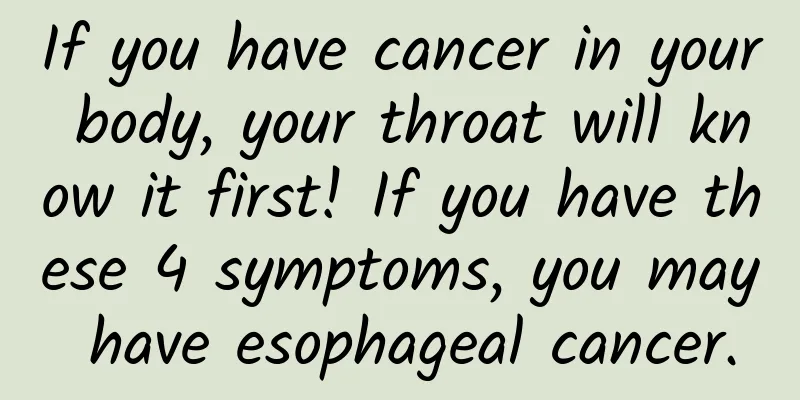Sudden bleeding six days after abortion

|
Terminating a pregnancy by artificial services or drugs in the first three months of pregnancy is called early pregnancy termination, which can also be called abortion surgery. It is used as a preventive measure against accidental pregnancy, and is also used to terminate a pregnancy due to medical reasons that make it unsuitable for pregnancy again, or to prevent congenital malformations or genetic diseases. Abortion can be divided into two types: surgical abortion and medical abortion. Common methods include vacuum aspiration abortion, forceps curettage and medical abortion. Why did I suddenly bleed on the sixth day after the abortion? Bleeding is normal. Generally, there will be bleeding for 3-10 days after the abortion. It is recommended to observe carefully. If the bleeding time is long or the amount is heavy, you need to go to the hospital to check whether there is a possibility of incomplete abortion. You can take motherwort paste to promote uterine contraction. It is recommended that you keep warm and get enough rest. There is no need to catch a cold, let alone drink cold boiled water. You should also take biochemical granules or biochemical pills to help the uterus expel blood. During this period, you should adjust your diet and eat more foods high in protein such as fish, lean meat, eggs, and milk. After 2 weeks, the patient will be re-examined to check the recovery of the uterus. Surgery for miscarriage 1. Vacuum aspiration Applicable to uterus within 10 weeks of pregnancy. The method of negative pressure electric suction is mainly used to suck out the early pregnancy materials, namely the gestational sac and decidual tissue, which is called negative pressure aspiration for abortion surgery or simply called negative pressure aspiration. This method was innovated in my country. This surgical treatment is relatively safe and simple, so it is also a common method to stop early pregnancy in clinical medicine. (1) Indications: Pregnancy termination is required within 10 weeks without contraindications; Blood pressure is not suitable for further pregnancy due to some medical or genetic diseases. (2) Contraindications: Acute symptoms of various diseases: subacute myocardial infarction, acute cerebral infarction, acute hepatitis, subacute blood diseases, subacute chronic kidney disease, subacute surgical diseases, etc. Patients with untreated genital inflammation, such as vaginitis, subacute suppurative cervicitis or acute cervicitis, acute and chronic pelvic inflammatory disease, genital tract infection, etc.; patients who cannot place the lithotomy position due to illness or trauma; patients whose general condition is poor and cannot withstand surgery; patients whose body temperature is above 37.5℃ twice before weight-bearing surgery should postpone surgery. 2. Anesthesia and analgesia techniques to perform negative pressure aspiration That is the so-called painless abortion surgery: (1) Indications: Pregnant women who agree to terminate the pregnancy with anesthesia and analgesia within 10 weeks of pregnancy; women who are not suitable for pregnancy again due to certain diseases (including genetic diseases) and agree to terminate the pregnancy with anesthesia and analgesia; women who are contraindicated in non-vacuum aspiration uterine surgery, anesthetics and general anesthesia; women who are rated as I-II according to the American Society of Anaesthesiologists (ASA) preoperative status assessment standards. (2) Contraindications: Patients in the acute stage of various blood diseases; patients with blood genital inflammation who have not been treated; patients in poor physical condition who cannot withstand surgery and anesthesia; patients with contraindications to anesthesia (allergic constitution, allergic asthma, anesthetics and various drug allergies); patients who have not avoided food or drink before full-term surgery; patients who are pregnant for more than 10 weeks or who are expected to have difficulty in surgery. 3. Curettage Anyone who is 10 to 13 weeks pregnant and requires termination of pregnancy or is not suitable for pregnancy due to special circumstances such as illness or other abortion methods have failed. Generally, a combination of forceps and vacuum aspiration is used to terminate pregnancy. The scope of forceps curettage is generally considered to be within 14 weeks. In recent years, due to the clinical application of mifepristone and progesterone, curettage has gradually been replaced by medical abortion. (1) Indications: Women who are 10 to 13 weeks pregnant and require termination of pregnancy or are unsuitable for pregnancy due to special circumstances such as illness; and women who have failed other abortion methods. (2) Contraindications: Acute symptoms of various diseases; Inflammation of the reproductive organs, such as vaginitis, subacute suppurative cervicitis or acute cervicitis, acute and chronic pelvic inflammatory disease, reproductive tract infection, etc., who can undergo surgery after treatment; Those whose general health is not good enough to undergo surgery can consider hospitalization for surgery after improvement; Those whose body temperature is above 37.5℃ twice before weight-bearing surgery. |
<<: Female anatomy HD pictures
Recommend
Are suppositories effective for gynecological inflammation?
Gynecological inflammation is a kind of recurring...
I suddenly didn't have my period for a month. What happened?
Under normal circumstances, women will have menst...
How long does it take to get your period after giving birth?
You will not have your period at first after givi...
The life concerns of 300 million patients with liver disease: How to prevent cirrhosis from turning into liver cancer?
March 18, 2024 is the 24th " National Liver ...
How to remove moles on the face without leaving scars
Moles on the face actually affect the appearance....
How many days does it take for abortion to stop bleeding?
People need to go to the hospital for regular che...
How to relieve pain after virginity
Generally speaking, when a woman's hymen rupt...
If I get pregnant again after two months of curing the uterus, can I keep the baby?
Uterine curettage is an effective way for women t...
What are the methods of daily makeup?
Nowadays, cosmetics have become a necessity for m...
I feel irritable after pregnancy, it means it's a boy
Many expectant mothers experience irritability du...
Normal estradiol levels
Speaking of estradiol, I believe many friends don...
Breast pain, missed period, what's going on?
In addition to gynecological diseases, many women...
How to use pear and honey to treat cough
Coughing is a common symptom in life. Colds, bron...
What is cheese? Is cheesecake delicious?
Cheese is a fermented dairy product with high nut...









